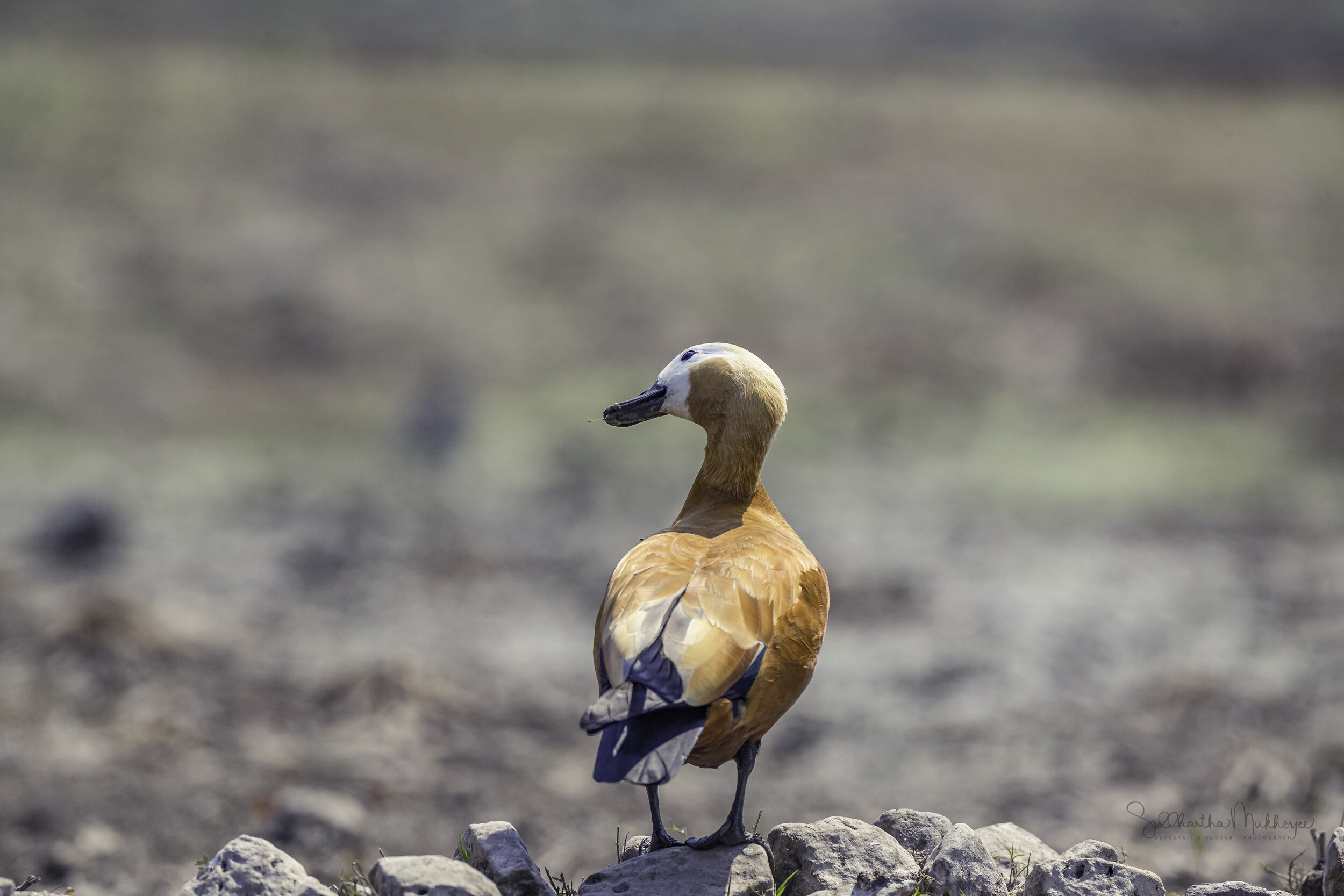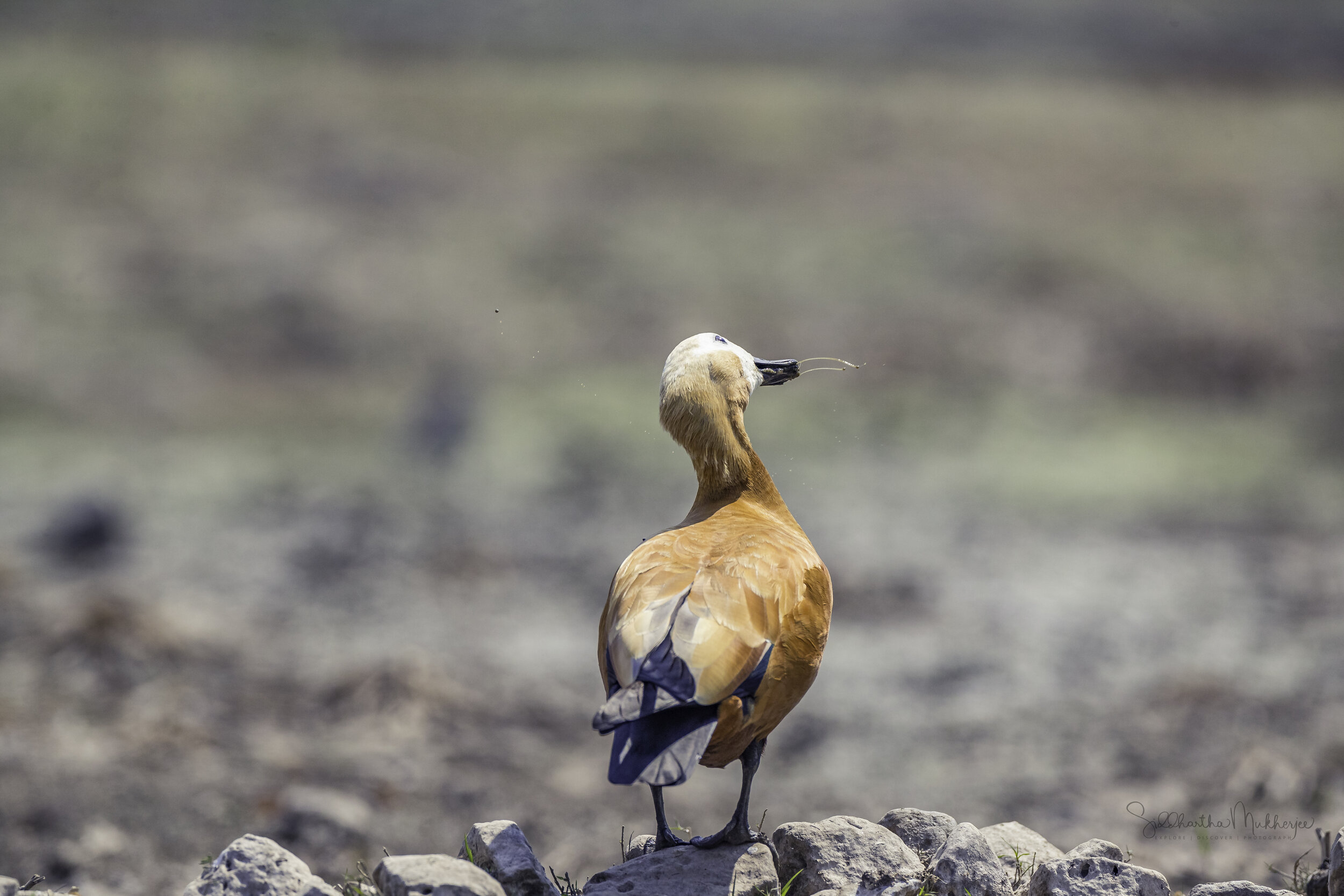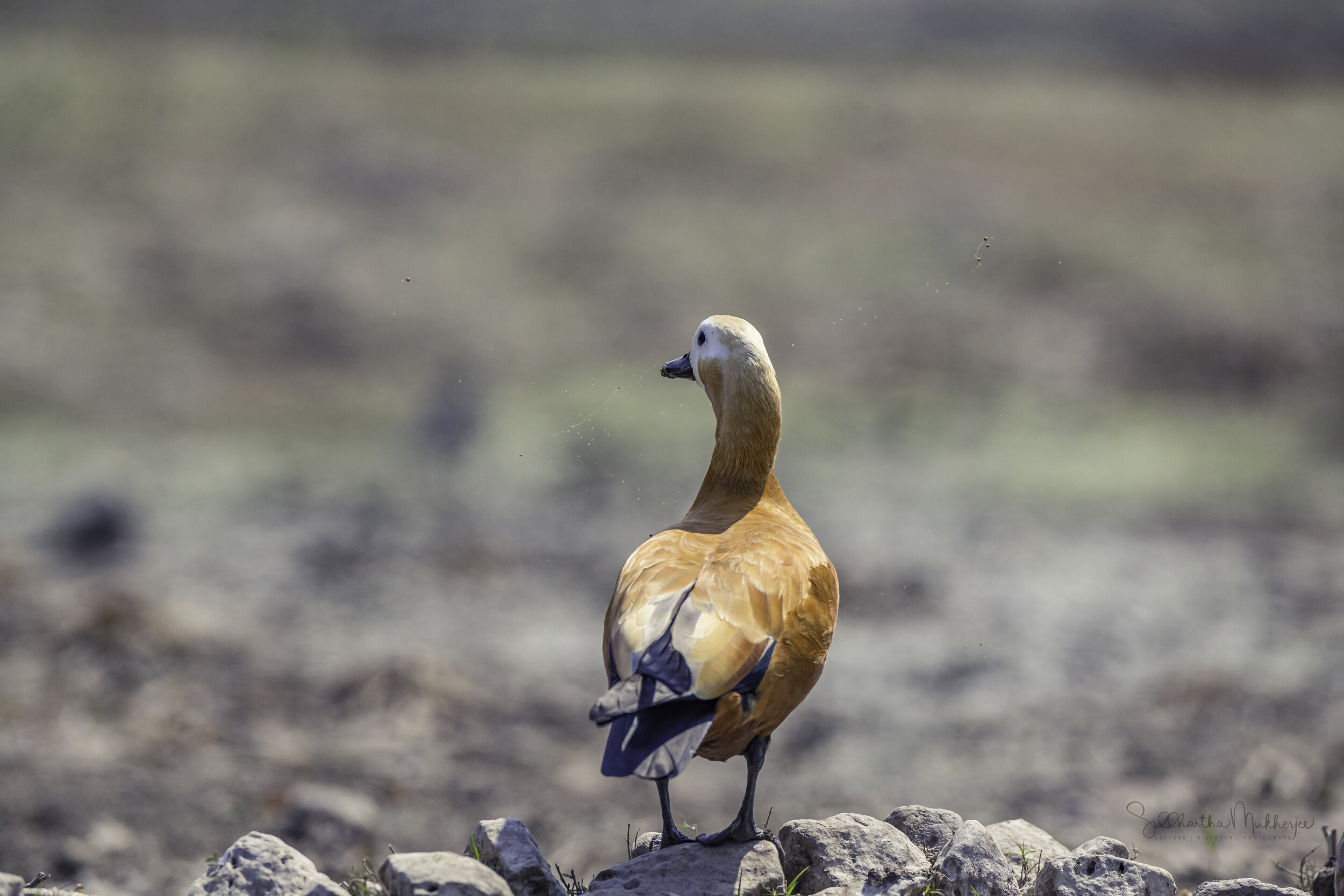Ruddy Shelduck
Tadorna ferruginea
Bhigwan Bird Sanctuary
Continuing our journey on the Ujni backwater wetlands, a shallow waste water reserve formed by the discharge of water from the Pune region dams like Panshet, Pawna, Khadakwasla, Varasgaon, Temghar, etc we now come up on the waterfowls now starting with the beautiful and distinctive Brahminy Duck or Ruddy Shelduck. This semi waste water has created an excellent wetland based ecosystem supporting a large variety of water birds, both endemic and migratory, and also helped with the local agriculture. Nearly 300 species of endemic and migratory birds have been recorded here. The rainfall in the Pune region decides the water level in Ujni dam. Lesser the water, the shallower it is and therefore more birds make it their home in the winter.
Surrounding this lush ecosystem are the rich grasslands and fertile farms home to an impressive list of birds, mammals and reptiles. The area around these backwaters are also unique with rich farmlands and dry deciduous scrub forest with interspersed grasslands. Home to an impressive list of birds, mammals and reptiles they protect many mammals like the Chinkara, Hyena, Wolf and Indian fox and are also popular for grassland birds and the birds of prey, including the magnificent eagles & harriers I’ve talked about in earlier blogs.
Read about the eagles & harriers of Kumbhargaon:
The endangered Steppe Eagle, vulnerable Greater Spotted Eagle & the rare and also vulnerable Eastern Imperial Eagle.
The beautiful Pallid Harrier, Montagu’s Harrier & Eurasian Marsh Harrier.
There are also other spectacular species like the Short-eared Owl, Spotted Owlets, the Indian Courser inhabiting the grasslands. But this time we will spend time on the Ujni backwaters again because after the Agnipankha (Greater Flamingo) we will now make our way to the Ruddy Shelducks.
During our time here we were hosted by and had the expert help of Sandip Nagare and his team of knowledgeable guides from the Agnipankha Bird Watcher group, especially Ganesh Bhoi, who went out of their way to ensure we had fantastic opportunities to explore, discover, observe & photograph over 82 species of birds and wildlife including some rare ones. We stayed at Sandip’s homestay of the same name and had the added pleasure of indulging in delectable home cooked food.
I spent a couple of days with great friends - Tirtho, Saugat & Samar (his first ever dedicated birding trip) - in Kumbhargaon village, the winter home for an immense variety of birds like Grey Herons, Painted Storks, Brown Headed Gulls, River Terns & Little Terns, the Black-headed & Red-naped Ibis, Little Ringed Plover, Osprey and the Peregrine Falcon to name a few.
‡‡‡‡‡
Ruddy Shelduck/ Brahminy Duck
The Ruddy Shelduck (Tadorna ferruginea), known in India as the Brahminy Duck, is a member of the family Anatidae. It is a very distinctive waterfowl, about 58 to 70 cm (23 to 28 in) in length with a wingspan of 110 to 135 cm (43 to 53 in). It is a striking and distinctive goose like duck with bright ruddy overall plumage and a contrasting pale creamy head and neck. The male has a narrow black neck ring and big white forewing patches striking in flight. It is a migratory bird, wintering in the Indian subcontinent and breeding in southeastern Europe and central Asia, though there are small resident populations in North Africa. It has a loud honking call and is often found around saline lakes, reservoirs and agricultural fields. Escapees from waterfowl collections are occasionally seen free-flying outside their native range.
In Tibet and Mongolia, the Ruddy Shelduck is considered sacred by the Buddhists. It is also a sacred animal in Slavic mythology. It is called Surkhab in Hindi and Urdu (India/Pakistan).
The genus name Tadorna has Celtic roots and means "pied waterfowl", essentially the same as the English "sheld duck" dating from 1700. The species name ferruginea is Latin for "rusty" and refers to the colour of the plumage.
It mostly inhabits inland water-bodies such as lakes, reservoirs and rivers. The male and female form a lasting pair bond and the nest may be well away from water, in a crevice or hole in a cliff, tree or similar site. A clutch of about eight eggs is laid and is incubated solely by the female for about four weeks. The young are cared for by both parents and fledge about eight weeks after hatching.
In central and eastern Asia, populations are steady or rising, but in Europe they are generally in decline. Altogether, the birds have a wide range and large total population, and the International Union for Conservation of Nature has assessed their conservation status as being of "least concern". The Ruddy Shelduck is one of the species to which the Agreement on the Conservation of African-Eurasian Migratory Waterbirds (AEWA) applies.
The Ruddy Shelduck is a distinctive species, 58–70 cm long with a 110–135 cm wingspan. It has orange-brown body plumage and a pale head. The wings are white with black flight feathers. It swims well, and in flight looks heavy, more like a goose than a duck.
The sexes of this striking species are similar, but the male has a black ring at the bottom of the neck in the breeding season summer, and the female often has a white face patch.
The call is a series of loud, nasal honking notes, it being possible to discern the difference between those produced by the male and the female. The calls are made both on the ground and in the air, and the sounds are variable according to the circumstances in which they are uttered.
There are very small resident populations of this species in north west Africa and Ethiopia, but the main breeding area of this species is from south east Europe across central Asia to southeast China. These birds are mostly migratory, wintering in southern Asia. This is a bird of open country, and it will breed in burrows, tree holes or crevices distant from water, laying 6-16 creamy-white eggs, incubated for 30 days. In captivity this species is generally aggressive and antisocial and is best housed in pairs unless in a very large area. Then it may mix with other species, although it will still be feisty at breeding time.
Although becoming quite rare in southeast Europe and southern Spain, the Ruddy Shelduck is still common across much of its Asian range. It may be this population which gives rise to vagrants as far west as Iceland and Great Britain. However, since the European population is declining, it is likely that most occurrences in western Europe in recent decades are escapes or feral birds. Although this bird is observed in the wild from time to time in eastern North America, no evidence of a genuine vagrant has been found.
The Ruddy Shelduck is usually found in pairs or small groups and rarely forms large flocks. However, moulting and wintering gatherings on chosen lakes or slow rivers can be very large.
‡‡‡‡‡
The following are some photos and a video of the beautiful Brahminy Ducks we encountered in the Ujni backwaters. These are a series of photographs from different spots in more or less the same general area with the light changing quite frequently.
These next images were when the duck decided to spit something out. Watch the droplets of water and mud I think scatter in all directions.



The following footage was recorded on 13th February on the Ujni backwaters of the Bhigwan Bird Sanctuary. We were riding the waves when we spotted the Ruddy Shelduck. The wind was not being supportive at all and although the stills were possible the video was a very different story. We again spotted the pair a little later on much better perches and were able to row in quite close.




























